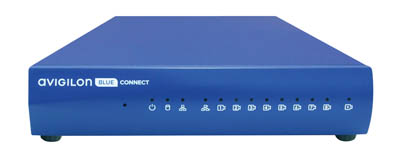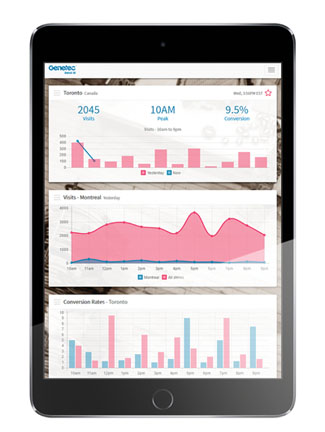When you consider video cloud services, the term can be confusing as it means different things to different people. While cloud services have become a ubiquitous part of the technological landscape, it is increasingly difficult to pin down people’s expectations and reservations because of the generality of the term. However, for the video surveillance sector, there are two very different approaches which offer opposed outcomes.
The modern commercial and industrial sectors are increasingly making use of the cloud and its associated services. The growth and overwhelming acceptance of SaaS (software as a service) is widespread, with tasks which are vital to business being delivered remotely. These range from stock control, invoicing and logistics management through to very specific business tasks such as process control, real-time reporting and tracking, IT services and sales. Where once businesses demanded ‘ownership’ of their critical systems, today they prefer to offload the labour-intensive elements of managing their solutions – maintenance, implementing upgrades, licence provision – to a service provider, only concerning themselves with business-relevant tasks. Additionally, this approach allows them to avoid investing capital in upfront payments for hardware and software, instead opting for a recurring cost which covers everything.
In a growing number of sectors, cloud services are not only expected, but are demanded by customers. The tide of opinion and acceptability has turned very much in favour of cloud-based services, and the security industry should not buck the trend. End users want cloud services, because they already rely on them for their core operations.
Today, there are many arguments for the use of cloud services with video solutions. While these by far outweigh arguments for a localised approach, it doesn’t mean all cloud services will be suitable for all sites. As with any technology, every application needs to be considered individually to assess how and where cloud services could add value. Much like video technology itself, cloud-based services and their associated benefits do vary considerably.
This variation even extends as far as considering what providers mean when they refer to ‘cloud services’. Whilst we can accept ‘the cloud’ is a catch-all term for remote computing, it can often be less clear what the service element is delivering. Because cloud services host software on remote servers to provide third-party services, it does mean that the purchased services could be everything an anything. In short, talk of cloud services on gives an integrators an understanding they are being offered third party services for which they will pay a recurring fee. Everything else is in the detail.
Cloud functionality
As already mentioned, there are two distinct approaches to video-based cloud services, and the first task is to consider the roles these play. The first of these is the provision of video storage and management. This was the first type of cloud offering to surface in the security sector many years ago, and is arguably the approach that fewer professional integrators will see value in.
 The idea behind cloud-based video storage and management was that users could record video without the need for a VMS or NVR. They could also perform basic management tasks via software running on the cloud servers. While this is, in principle, an acceptable idea, the reality is it’s not practical for many professional security users, even those with a low camera count. The biggest issue is upload capacity. If a site uses HD1080p cameras, then the streams for real-time footage would be anywhere between 2Mbps for very basic quality images, up to 10Mbps for streams which deliver the full quality expected from HDTV footage. Once you start to multi[ply the bandwidth for each camera, it soon becomes obvious how a site will struggle to send its video to a cloud storage server, given that broadband is biased towards downloading rather than uploading.
The idea behind cloud-based video storage and management was that users could record video without the need for a VMS or NVR. They could also perform basic management tasks via software running on the cloud servers. While this is, in principle, an acceptable idea, the reality is it’s not practical for many professional security users, even those with a low camera count. The biggest issue is upload capacity. If a site uses HD1080p cameras, then the streams for real-time footage would be anywhere between 2Mbps for very basic quality images, up to 10Mbps for streams which deliver the full quality expected from HDTV footage. Once you start to multi[ply the bandwidth for each camera, it soon becomes obvious how a site will struggle to send its video to a cloud storage server, given that broadband is biased towards downloading rather than uploading.
Additionally, the cost of memory has fallen significantly in recent years, while capacities have increased exponentially. Because recorded video footage usually plays a part in the security of a site, end users are less willing to store footage off-site, when local storage can be achieved cost-effectively, without any compromise in terms of quality, duration of retention and/or frame rate.
As cybersecurity grows in relevance, there is a growing resistance to sending surveillance data – which is classed as personal data under GDPR – to a third party for storage and management.
For sites with multiple cameras, the need to archive high quality real-time images, and to have full control over those images, is often the biggest obstacle to cloud-based recording services. Indeed, such recording services only make sense where a site has a very low camera count, and cloud-based recording can offer a cost-effective simple solution. However, this approach can make sense if a hybrid approach is taken.
With a hybrid recording model, local servers record and archive images in high resolution, ensuring they are available for evidential purposes. However, lower quality clips of alarm events can be sent to the cloud. These can then be shared if a central office needs access to video, or for alarm verification.
The second approach to cloud-based video services, and one which is increasingly being adopted by video manufacturers and professional integrators alike, is the delivery of smart add-on services which relate to processing and analysing image content.
Video footage is archived on site, as with a standard video surveillance solution. However, a mixture of low resolution video streams and/or generated metadata is fed to the cloud server, allowing high level analytics to be performed. As a result, alarms or events can be identified and sent back to the local system, or reports can be generated to provide business intelligence to the user.
 With this approach, the integrator is effectively off-loading the analytics, search, filtering and reporting functions to the cloud. By eliminating the parts of the system which require high computational abilities and software configurations, a cost-saving in terms of capital expenditure can be made, while also eliminating tasks such as software and license management.
With this approach, the integrator is effectively off-loading the analytics, search, filtering and reporting functions to the cloud. By eliminating the parts of the system which require high computational abilities and software configurations, a cost-saving in terms of capital expenditure can be made, while also eliminating tasks such as software and license management.
Because much of the smart analysis only makes use of metadata, which is alphanumeric, the issues with upload capacity and video management load are also removed.
Most system which utilise processing in the cloud are hybrid solutions, with a local VMS-based or hardware-based system managing recording and archiving, as well as general video management. Its performance is supplemented with additional services and/or features which are accessed via the cloud service. Many sites will already be using such cloud-based services, even if the users are unaware of it. Many systems offer a simple interface enabling users to remotely manage the basic configurations of their systems. The interface will inevitably be cloud-based. Equally, if the user receives notifications or can generate reports to share with other authorised persons, again this will usually be cloud-based.
The cloud is ideal for such purposes as those accessing the information or managing system parameters have no need to interact with the core security system. User error is reduced, and site security is enhanced. With the growing focus on cybersecurity, cloud services ensure rogue users cannot interact with the system’s OS or software.
Cloud services can be used to share information gathered from metadata. This can be associated with video analytics, enabling alarm and incident reports to be shared, but the insights might not have a security relevance. For example, cameras supporting business intelligence-based analytics such as people counting, heat mapping or flow analysis, can share relevant data with other users. In many cases, the video will not be required to achieve this, just the metadata.
Metadata offers great value to many users such as retailers, hospitality and entertainment providers, etc., but having to interrogate cameras or VMS packages to access it invariably means it doesn’t get used. By delivering supplementary data in push notification reports via a cloud service, the user enjoys a simple and automated benefit from their system.
 With a good implementation, there is little difference between using a VSaaS IVA service and localised servers for content analysis. The bonus for integrators is that updates, maintenance and licensing all takes place in the cloud and is managed by the provider.
With a good implementation, there is little difference between using a VSaaS IVA service and localised servers for content analysis. The bonus for integrators is that updates, maintenance and licensing all takes place in the cloud and is managed by the provider.
While these examples of how cloud services can add value cover most applications, there are other more specialist cloud applications. For example, some suppliers use cloud connectivity to deliver configurations or to implement additional services, such as DDNS, without intervention by the integrator. Another use is the ‘locking down’ of cybersecurity measures once configurations are complete. By simplifying installation procedures and assisting with advanced system configurations, the cloud services can enhance system delivery for engineers.
In summary
Judging cloud services is difficult, because many of the provisions are specific to individual manufacturers and service providers. Like most things in technology, the offerings are evolving, and the benefits can be significant if the right services are used.
While cloud services aren’t suited to every application, there will be a cloud solution of some type which can deliver benefits.
When cloud services are selected and deployed correctly, a credible solution can be created which enhances the user’s return on investment. As such, it is critical integrators do not have a closed mind to the potential on offer from cloud-based video services.







